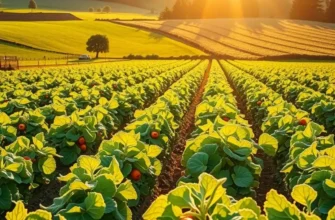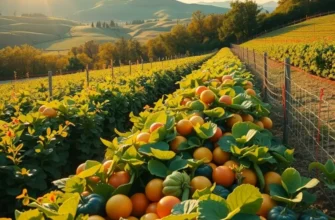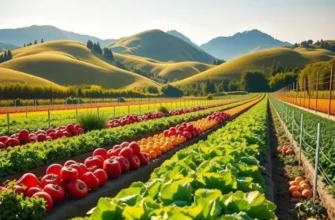Pulses, including lentils, chickpeas, and beans, are not only rich in protein and nutrients but also serve as a cornerstone for sustainable agriculture. Their ability to enrich soil, reduce the need for synthetic fertilizers, and lower carbon emissions makes them an essential element for eco-conscious eaters. As we aim to mitigate climate change and promote biodiversity, cultivating and consuming pulses offers a practical solution that aligns with environmentally friendly practices. Let’s delve into their multifaceted roles in sustainable farming and how you can incorporate these superfoods into your diet.
Nutritional Powerhouses: The Benefits of Pulses

Pulses, a group that includes beans, lentils, chickpeas, and peas, are celebrated for their exceptional nutritional profile and environmental benefits. Rich in protein, dietary fiber, vitamins, and minerals, pulses are vital for fostering personal and planetary health.
Protein is an essential nutrient, and pulses provide this without the saturated fat found in some animal sources. For individuals pursuing plant-based eating, pulses offer a crucial protein alternative, aligning with such easy plant-based eating options. Their protein content supports muscle repair, immune functions, and hormone synthesis, making them indispensable in any diet.
Moreover, pulses are abundant in dietary fiber, which promotes a healthy digestive system. Insoluble fiber found in pulses aids in regular bowel movements, while soluble fiber helps control blood sugar levels and reduces cholesterol. This dual action is beneficial in preventing chronic diseases such as diabetes and cardiovascular conditions, underscoring pulses’ role in supporting long-term health.
Pulses are also a rich source of micronutrients. They are packed with folate, iron, and potassium, essential for energy production, oxygen transportation, and maintaining healthy blood pressure. Including pulses in diets can mitigate nutrient deficiencies, particularly iron, which is often low in vegetarian and vegan diets.
Environmentally, pulses are champions of sustainability. They require significantly less water and energy to cultivate compared to animal-based protein sources. Pulses fix nitrogen in the soil through symbiotic relationships with bacteria, reducing the need for synthetic fertilizers. This natural fertilization process enriches soil health, improving biodiversity and farming resilience in changing climates.
Furthermore, their low carbon footprint makes pulses a preferred choice for those seeking eco-friendly food options. By choosing pulses, individuals contribute to reduced greenhouse gas emissions associated with food production, marking a personal commitment to combatting climate change.
The advantages of incorporating pulses into our diets extend beyond individual health to encompass global ecological benefits. Their resilience to adverse weather conditions ensures food security, playing a pivotal role in sustainable agriculture. By choosing pulses regularly, we can forge a path toward healthier living and a healthier planet.
Pulses and Soil Health: Champions of Sustainable Farming

Pulses like lentils, chickpeas, and beans hold an invaluable position in eco-friendly agriculture. Their ability to enhance soil health through nitrogen fixation makes them a sustainable choice for farmers across the globe. Nitrogen fixation allows pulses to convert atmospheric nitrogen into a form that plants can use. This natural process reduces the need for synthetic fertilizers, which are often associated with environmental degradation.
Pulses form symbiotic relationships with rhizobia bacteria in the soil. These bacteria inhabit the roots, creating nodules where they fix atmospheric nitrogen. The process not only nourishes the pulses themselves but also benefits subsequent crops. Farmers practicing crop rotation often follow pulses with nitrogen-demanding plants such as wheat, corn, or cereals. This strategy maximizes soil fertility and maintains a balanced nutrient profile, reducing the dependency on chemical fertilizers.
The reduced need for fertilizers minimizes the risk of nitrate leaching into water bodies—a significant environmental concern. Nitrate pollution affects water quality and aquatic life, leading to eutrophication, which harms marine ecosystems. By growing pulses, farmers contribute to healthier waterways and a more balanced ecosystem.
In addition to enriching soil, pulses improve soil structure and organic matter. Their deep root systems encourage soil aeration and water retention, which is crucial for areas prone to drought. Enhanced soil structure reduces erosion and increases the land’s resilience against adverse weather conditions, promoting sustainable farming practices.
Moreover, pulses can aid in carbon sequestration, playing a role in mitigating climate change. By integrating pulses into crop rotations, farmers can help absorb atmospheric carbon dioxide, thereby reducing their carbon footprint. The promotion of diverse planting systems creates a more robust agroecosystem, capable of resisting pest and disease outbreaks.
Networking pulses into low-input agricultural systems showcases their versatility and ecological benefits. They empower farmers to pursue integrated pest management strategies, utilizing fewer chemical interventions. The inclusion of pulses in farming cycles exemplifies a proactive step toward maintaining soil health and farming resilience.
In conclusion, growing pulses is a practice rich with environmental benefits, steering agriculture toward sustainability. Their role extends beyond soil health, impacting water quality, crop yield, and biodiversity. As we explore new ways to improve and sustain our food systems, pulses are a beacon of hope and efficiency.
For those interested in adopting sustainable practices, optimizing kitchen resources is essential. Learn more about eco-smart approaches in the kitchen here.
Final words
Pulses hold immense potential not only as a staple in our diets but as crucial players in sustainable agriculture. Their ability to enhance soil health, provide essential nutrients, and lower greenhouse gas emissions speaks volumes about their role in fostering a healthier planet. As you strive for eco-friendly food choices, consider incorporating more pulses into your meals. Whether through soups, salads, or simple dishes, these legumes can make a significant difference—both nutritionally for you and environmentally for the earth. Together, we can create a sustainable future, one pulse at a time.








